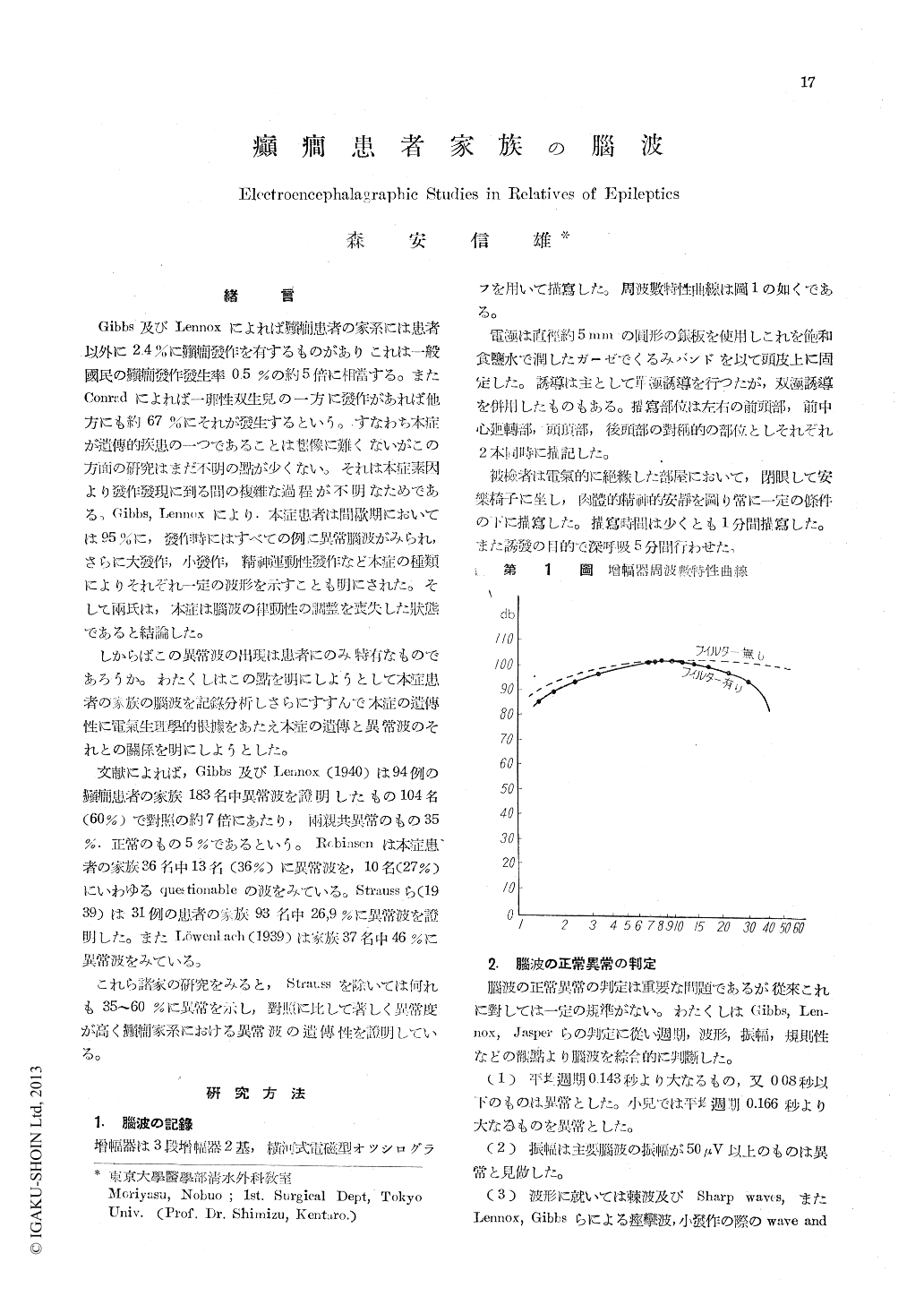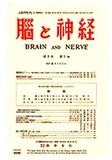Japanese
English
- 有料閲覧
- Abstract 文献概要
- 1ページ目 Look Inside
緒言
Gibbs及びLennoxによれば癲癇患者の家系には患者以外に2.4%に癲癇發作を有するものがありこれは一般國民の癲癇發作發生率0.5%の約5倍に相當する。またConradによれば一卵性双生兒の一方に發作があれば他方にも約67%にそれが發生するという。すなわち本症が遺傳的疾患の一つであることは想像に難くないがこの方面の研究はまだ不明の點が少くない。それは本症素因より發作發現に到る間の複雜な過程が不明なためである。Gibbs,Lennoxにより.本症患者は間歇期においては95%に,發作時にはすべての例に異常腦波がみられ,さらに大發作,小發作,精神運動性發作など本症の種類によりそれぞれ一定の波形を示すことも明にされた。そして兩氏は,本症は腦波の律動性の調整を喪失した状態であると結論した。
しからばこの異常波の出現は患者にのみ特有なものであろうか。わたくしはこの點を明にしようとして本症患者の家族の腦波を記録分析しさらにすすんで本症の遺傳性に電氣生理學的根據をあたえ本症の遺傳と異常波のそれとの關係を明にしようとした。
Electrcencephalographic traeings were made in 111 parents, children and siblings of epileptic patients. Definitely abnormal records were obtained in 42 per cent of the relatives, against 8 per cent in a control group who were unrelated toepileptic persons. In thirteen of the families, records were made of both parents and of those, at least one of the parents showed abnormal record in 77 per cent. This evidence shows that the dysrhythmia of epilepsy is inheritable and that it may represent a predisposition to epilepsy. There was no definite difference between male and female.
Abnormal records were obtained in 48 per cent of the relatives of symptomatic epileptric persons, against in 11 per cent in a control group.
The types of dysrhythmias are as follows:
abnormally slow……………………55%
slow and fast………………………41%
abnormally fast……………………2%
wave and spike……………………2%

Copyright © 1951, Igaku-Shoin Ltd. All rights reserved.


